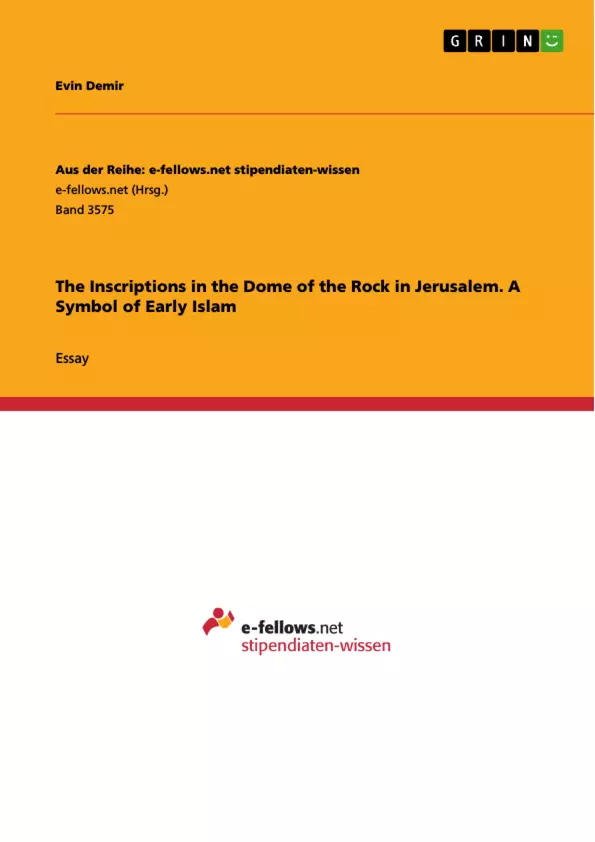The work focuses on the Dome of the Rock on the Temple Mount in Jerusalem. The author focuses on the significance of the building as a symbol of early Islam in a recently conquered city.
Inhaltsverzeichnis (Table of Contents)
- Introduction
- The Building and its Location
- The Inscriptions in the Dome of the Rock
- Jerusalem under 'Abd al-Malik's reign
- Summary
Zielsetzung und Themenschwerpunkte (Objectives and Key Themes)
This text explores the historical and religious significance of the Dome of the Rock in Jerusalem, specifically focusing on its construction under the Umayyad Khalīf 'Abd al-Malik ibn Marwān in the late 7th century. It examines the building's architectural features, the inscriptions within it, and its role within the context of early Islamic religious and political developments.
- The historical and architectural context of the Dome of the Rock
- The religious significance of the Dome of the Rock for early Islam
- The role of the Dome of the Rock in the political landscape of the early Islamic period
- The relationship between the Dome of the Rock and other religious sites in Jerusalem
- The influence of Christian and Jewish traditions on the Dome of the Rock's construction and symbolism
Zusammenfassung der Kapitel (Chapter Summaries)
- Introduction: This chapter provides a brief overview of Jerusalem's significance within monotheistic religions, especially within Islam. The text references the story of Muhammad's ascension to heaven and connects it to the building of the Dome of the Rock, which is interpreted as the "Remote Mosque."
- The Building and its Location: This section focuses on the Dome of the Rock as the first monument of Islamic architecture in Jerusalem. The text describes its architectural features, its location on the Temple Mount, and its relationship to the existing Christian and Jewish communities in Jerusalem.
- The Inscriptions in the Dome of the Rock: This section examines the inscriptions within the Dome of the Rock, highlighting their significance as the earliest written Quranic passages. The text discusses the political implications of the inscriptions, noting the replacement of 'Abd al-Malik's name with that of the Abbasid Khalīf Al-Ma'mun. It also delves into the theological and socio-political messages conveyed through the inscriptions.
- Jerusalem under 'Abd al-Malik's reign: This chapter explores the broader political context of Jerusalem under 'Abd al-Malik's rule. The text examines the rivalries between 'Abd al-Malik and ‘Abdallāh ibn az-Zubayr and discusses the potential religious and political motivations behind the construction of the Dome of the Rock.
Schlüsselwörter (Keywords)
The key terms and concepts explored in this text include the Dome of the Rock, Jerusalem, 'Abd al-Malik ibn Marwān, Umayyad Dynasty, Islamic architecture, early Islam, religious symbolism, political power, Quranic inscriptions, and the relationship between Islam and other monotheistic religions.
- Arbeit zitieren
- Evin Demir (Autor:in), 2017, The Inscriptions in the Dome of the Rock in Jerusalem. A Symbol of Early Islam, München, GRIN Verlag, https://www.grin.com/document/899599



